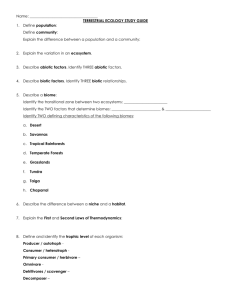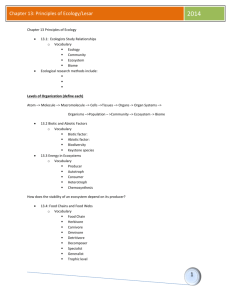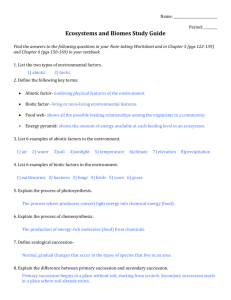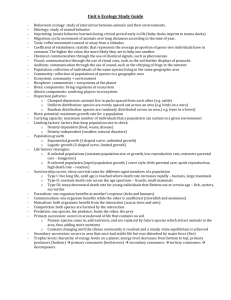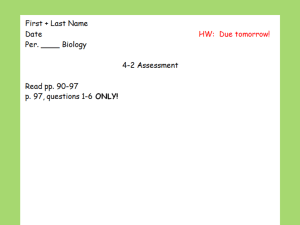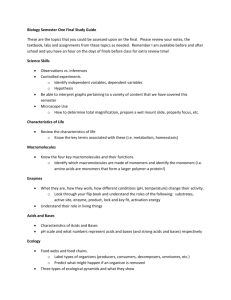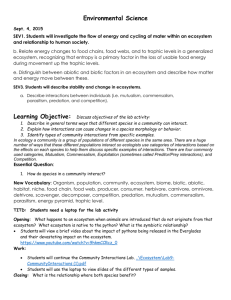Ecology Unit Study Guide
advertisement
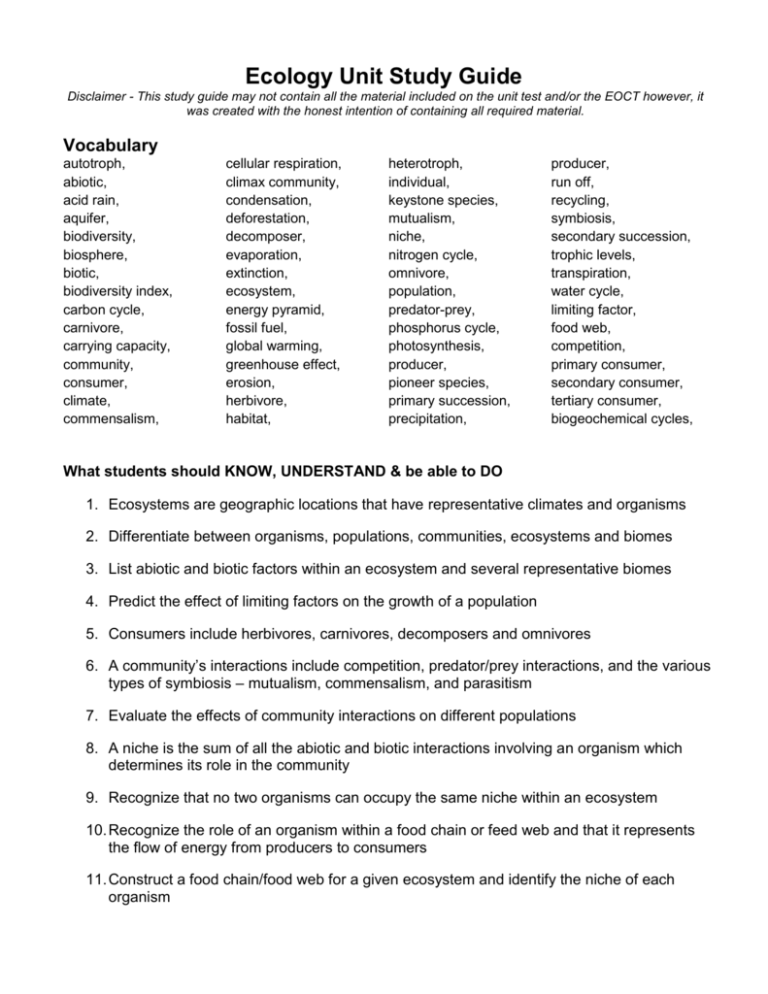
Ecology Unit Study Guide Disclaimer - This study guide may not contain all the material included on the unit test and/or the EOCT however, it was created with the honest intention of containing all required material. Vocabulary autotroph, abiotic, acid rain, aquifer, biodiversity, biosphere, biotic, biodiversity index, carbon cycle, carnivore, carrying capacity, community, consumer, climate, commensalism, cellular respiration, climax community, condensation, deforestation, decomposer, evaporation, extinction, ecosystem, energy pyramid, fossil fuel, global warming, greenhouse effect, erosion, herbivore, habitat, heterotroph, individual, keystone species, mutualism, niche, nitrogen cycle, omnivore, population, predator-prey, phosphorus cycle, photosynthesis, producer, pioneer species, primary succession, precipitation, producer, run off, recycling, symbiosis, secondary succession, trophic levels, transpiration, water cycle, limiting factor, food web, competition, primary consumer, secondary consumer, tertiary consumer, biogeochemical cycles, What students should KNOW, UNDERSTAND & be able to DO 1. Ecosystems are geographic locations that have representative climates and organisms 2. Differentiate between organisms, populations, communities, ecosystems and biomes 3. List abiotic and biotic factors within an ecosystem and several representative biomes 4. Predict the effect of limiting factors on the growth of a population 5. Consumers include herbivores, carnivores, decomposers and omnivores 6. A community’s interactions include competition, predator/prey interactions, and the various types of symbiosis – mutualism, commensalism, and parasitism 7. Evaluate the effects of community interactions on different populations 8. A niche is the sum of all the abiotic and biotic interactions involving an organism which determines its role in the community 9. Recognize that no two organisms can occupy the same niche within an ecosystem 10. Recognize the role of an organism within a food chain or feed web and that it represents the flow of energy from producers to consumers 11. Construct a food chain/food web for a given ecosystem and identify the niche of each organism 12. The sun is the major source of all energy in ecosystems 13. Infer the effect of a change within a trophic level to other levels within the energy pyramid or a food chain/web 14. Trophic levels include producers, consumers, and decomposers 15. An energy pyramid shows how the level of energy transferred to each higher trophic level decreases 16. Matter is recycled through various systems in an ecosystem 17. Illustrate the recycling of matter in an ecosystem – the biogeochemical cycles 18. Analyze the transfer of energy and matter through an ecosystem 19. Evaluate the effects of human activities on the environment i.e. pollution, global warming, explosive population, pesticides and herbicide usage, resources consumption, renewable and nonrenewable 20. Succession is a natural process of change in the abiotic and biotic factors in a geographic area resulting in environmental variation and the establishment of a climax community 21. Differentiate between primary and secondary succession to changes within an ecosystem 22. Recognize that human activities can influence succession in a geographic area 23. Sequence the various stages of succession 24. Identify plant and animal adaptations, both physical and behavioral, relate to survival in their environment 25. Certain plant behaviors (tropisms) are adaptations for survival in their environment 26. Determine which plant and animal adaptations are the most favorable in a particular environment

